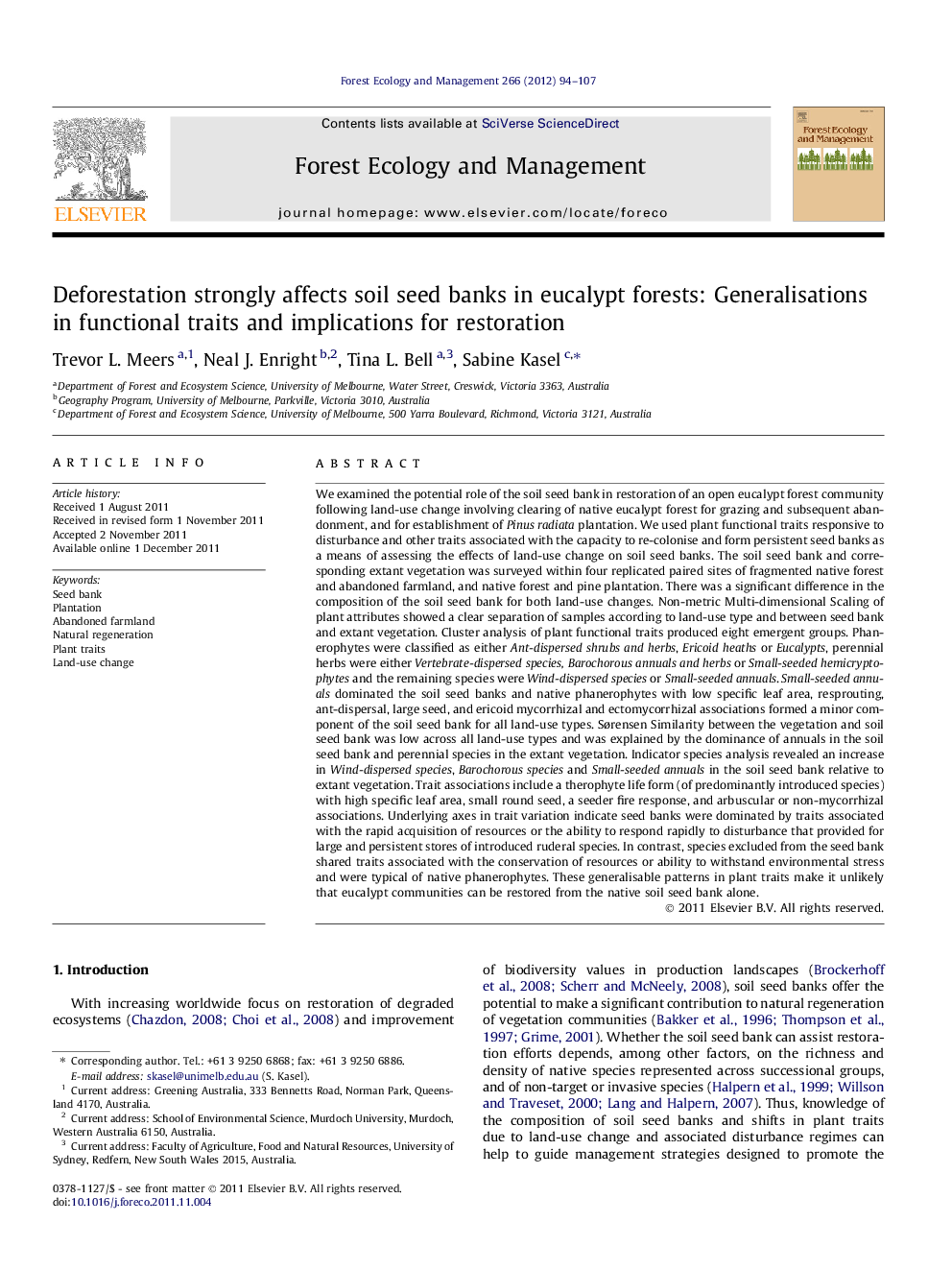| کد مقاله | کد نشریه | سال انتشار | مقاله انگلیسی | نسخه تمام متن |
|---|---|---|---|---|
| 87704 | 159263 | 2012 | 14 صفحه PDF | دانلود رایگان |

We examined the potential role of the soil seed bank in restoration of an open eucalypt forest community following land-use change involving clearing of native eucalypt forest for grazing and subsequent abandonment, and for establishment of Pinus radiata plantation. We used plant functional traits responsive to disturbance and other traits associated with the capacity to re-colonise and form persistent seed banks as a means of assessing the effects of land-use change on soil seed banks. The soil seed bank and corresponding extant vegetation was surveyed within four replicated paired sites of fragmented native forest and abandoned farmland, and native forest and pine plantation. There was a significant difference in the composition of the soil seed bank for both land-use changes. Non-metric Multi-dimensional Scaling of plant attributes showed a clear separation of samples according to land-use type and between seed bank and extant vegetation. Cluster analysis of plant functional traits produced eight emergent groups. Phanerophytes were classified as either Ant-dispersed shrubs and herbs, Ericoid heaths or Eucalypts, perennial herbs were either Vertebrate-dispersed species, Barochorous annualsand herbs or Small-seeded hemicryptophytes and the remaining species were Wind-dispersed species or Small-seeded annuals. Small-seeded annuals dominated the soil seed banks and native phanerophytes with low specific leaf area, resprouting, ant-dispersal, large seed, and ericoid mycorrhizal and ectomycorrhizal associations formed a minor component of the soil seed bank for all land-use types. Sørensen Similarity between the vegetation and soil seed bank was low across all land-use types and was explained by the dominance of annuals in the soil seed bank and perennial species in the extant vegetation. Indicator species analysis revealed an increase in Wind-dispersed species, Barochorousspecies and Small-seeded annuals in the soil seed bank relative to extant vegetation. Trait associations include a therophyte life form (of predominantly introduced species) with high specific leaf area, small round seed, a seeder fire response, and arbuscular or non-mycorrhizal associations. Underlying axes in trait variation indicate seed banks were dominated by traits associated with the rapid acquisition of resources or the ability to respond rapidly to disturbance that provided for large and persistent stores of introduced ruderal species. In contrast, species excluded from the seed bank shared traits associated with the conservation of resources or ability to withstand environmental stress and were typical of native phanerophytes. These generalisable patterns in plant traits make it unlikely that eucalypt communities can be restored from the native soil seed bank alone.
► Deforestation of eucalypt communities results in a poor soil seed store of native trees and shrubs.
► Soil seed bank species shared traits associated with the ability to respond rapidly to disturbance.
► Excluded species shared traits associated with the ability to withstand environmental stress.
► Eucalypt communities can not be restored from the native soil seed bank alone.
Journal: Forest Ecology and Management - Volume 266, 15 February 2012, Pages 94–107